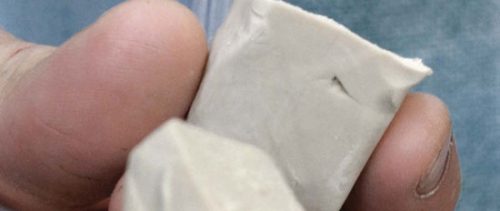Like a mixture of fermented herring and a brewery – the smell of yeast production is overpowering at the factory. There can be no doubt that all kinds of organic processes are going on here. 30,000 tonnes of baker’s yeast are manufactured every year at the yeast factory in Grenaa, on the east coast of Jutland. Half of this yeast is refined to make yeast extract, a very fine, yellowish-white powder with a slight broth flavour. This extract is exported to food industries the world over. Above all, it is being used more and more as a flavour enhancer as it can replace glutamate in stock cubes, for instance.
“Yeast extract is a natural, non-hazardous flavour enhancer. Unlike glutamate, which is synthetic. More and more food manufacturers are realising this. Demand is increasing”, says Erik Mortensen, project manager at De Danske Gærfabrikker.
He shows us around the premises. In the tall main building, eight stainless steel containers take up most of the space. Each of these can accommodate
150,000 litres of fluid to be turned into baker’s yeast. The yeast fungi swim round in a nutrient solution made up mostly of molasses. After 20 hours, the yeast fungi have absorbed as much as they can take and the contents are emptied out of the containers, which are then cleaned thoroughly and refilled within four hours.
“As you know, a packet of yeast doesn’t cost much in the shop. But in its refined form – as yeast extract, for example – it’s worth five to ten times more,” says Erik Mortensen as he leans over the conveyor belt and grabs a packet of yeast bearing the classic red Maltese cross, opens it and breaks up the yeast inside. The scent now is reminiscent of freshly baked bread.
No production stoppages
A spray tower was built three years ago for the production of yeast extract. The fine yeast extract is incredibly sensitive to moisture, and it has been hard to keep production going, particularly in summer when the air is warm and damp. The machines often had to be stopped because the air filters were sticky. There was also a major risk of the extract forming lumps when it cooled.
“The system was incredibly unreliable, with constant stoppages, sometimes every four hours. We had to build up stocks in winter and shut down production in summer”, says Erik Mortensen.
It was at this point that Thomas Plath, project manager at technology enterprise Glenco, was asked whether he could come up with a solution to the problem. He was just working on project planning for ventilation in the main building. Glenco had heard of Jørgen Lyngaas, DST’s Danish representative, and he was contacted. The project was soon up and running. The dehumidifier to dehumidify and cool the air so that the yeast extract would not start to form lumps was designed and built at the DST workshop in Spånga. The bottom line was that it had to dehumidify and cool the air without cooling water. The dehumidifier was installed in September 2011, and was built to remain in place all year round. It had to dehumidify 20,000 cubic metres of air per hour, and one kilo of air could contain no more than three grams of moisture. When installation was complete, the results were good.
“We had major supply problems in the previous summer. We were unable to plan production. But we’ve been operating without interruption since September, when the air dehumidifier was installed”, says Erik Mortensen.
The summer of 2012 is fast approaching. Erik Mortensen is curious to know how things will go. But if it works the way it should, this will means that yeast extract can be produced even on hot, damp summer days, and hopefully the many producing stoppages will be avoided.
“But we haven’t seen it working yet”, he says.
“There’s nothing to be nervous of”, says Jørgen Lyngaas.
“I’m relying on Jørgen”, says project manager Thomas Plath.
Download the Dewpoint as PDF here

